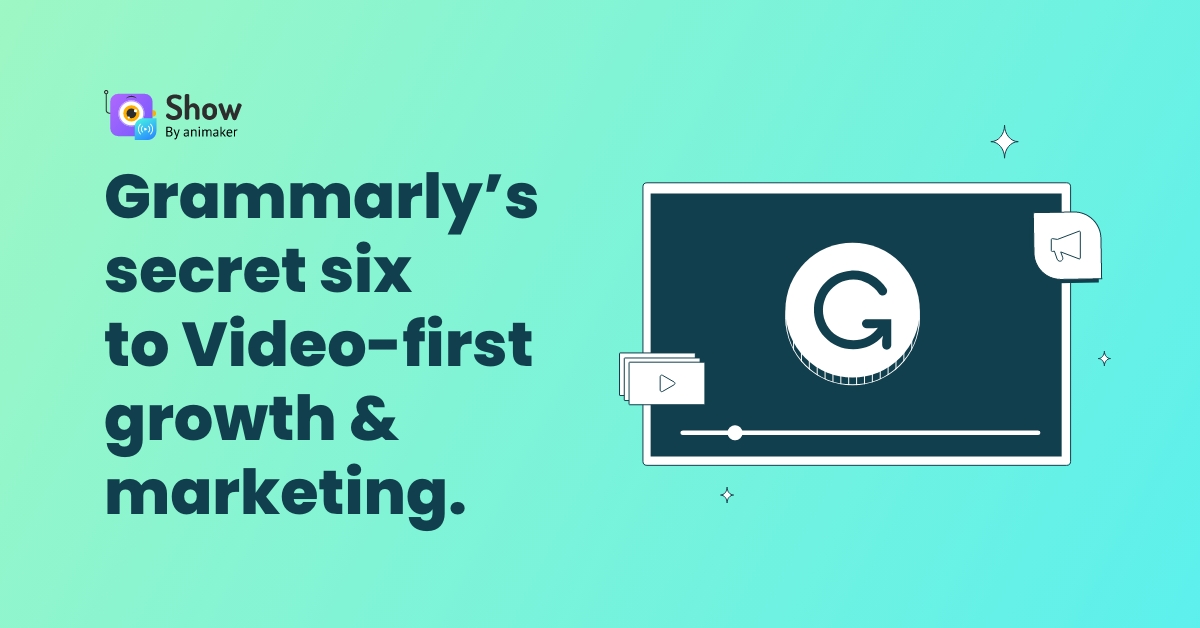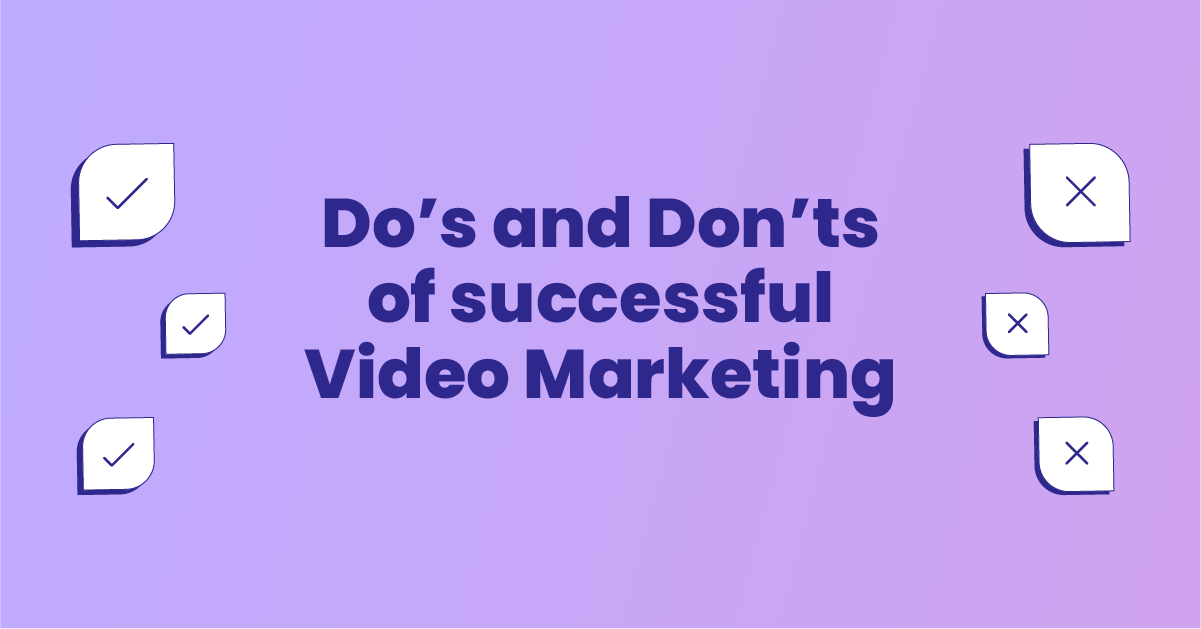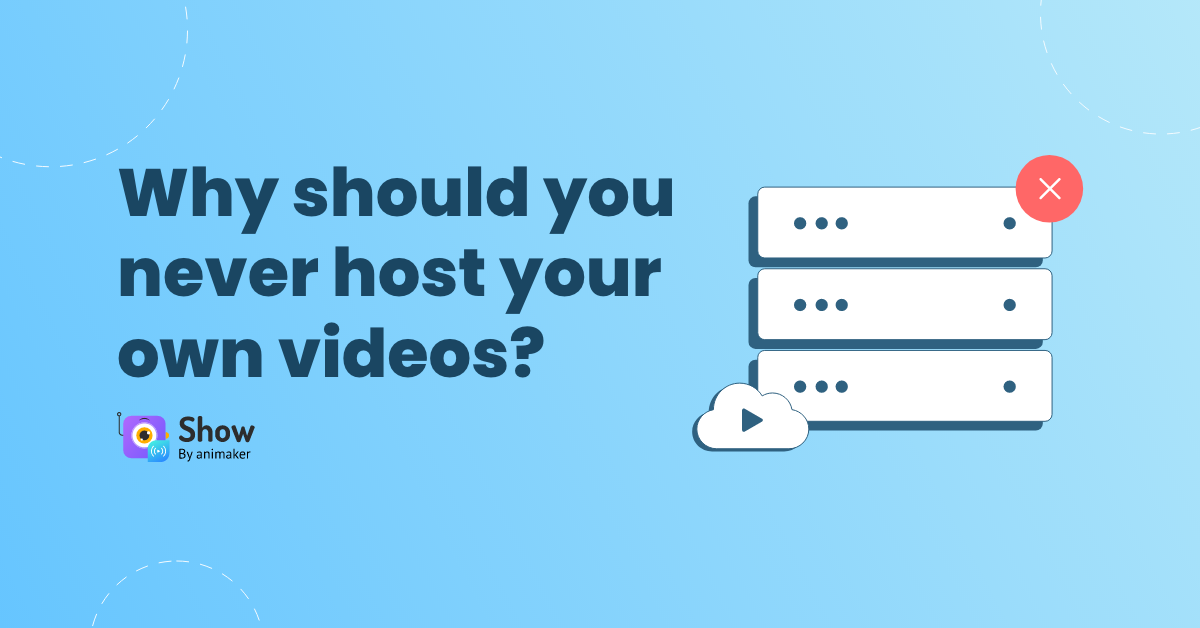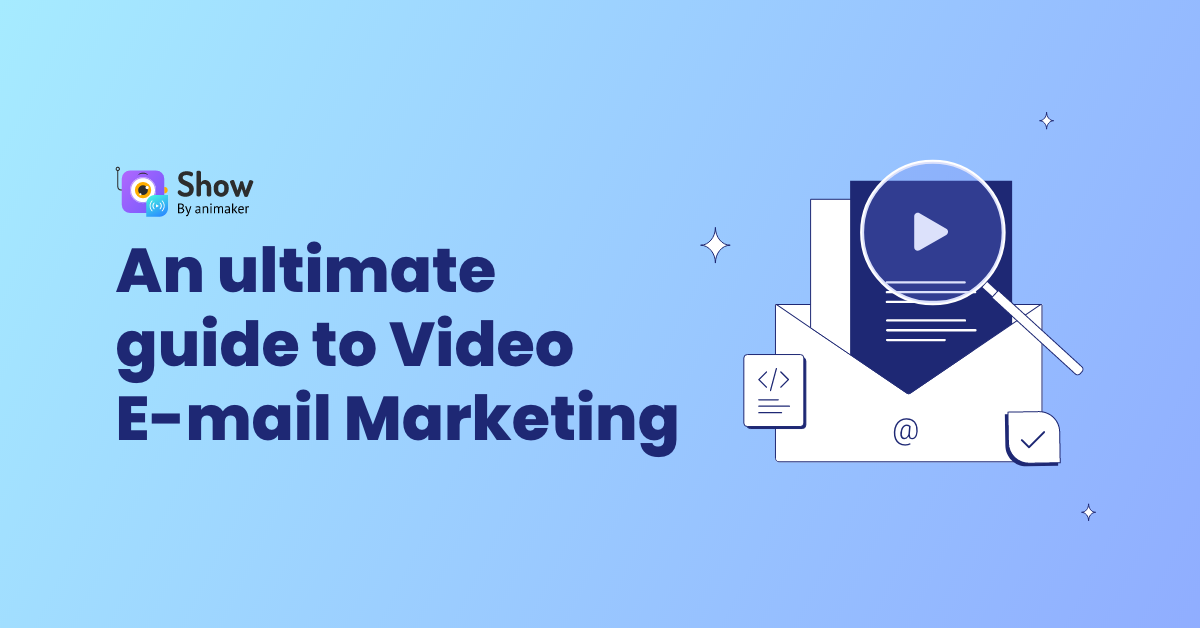Contents
How Grammarly uses video first marketing to drive growth
1. Short videos & long videos choose it wisely
2. Using Videos + landing pages for higher engagement
3. Using Videos to upsell premium plans and raise ARPU
4. Video SEO is the secret sauce you weren’t told about
5. Videos help build incredible marketing funnels
6. Customer stories and Testimonials via videos build amazing ambassadors
Grammarly’s secret six to Video-first growth & marketing
Grammarly can help.
With a simple premise encapsulated in the above three words (also it's signature VO in most commercials), the cloud-based writing-assistance technology company has virtually created a new market.
TechCrunch reported that Grammarly is valued at $13 billion. As recently as November 2021, it raised one more round of funding: $200 million.
We wanted to understand and share with you how Grammarly made it this big. So we dug deeper into their video marketing strategy and uncovered some impressive stuff!
This post covers the five amazing things that Grammarly did to become one of the most well-known brands on the internet today. You can use these ideas as inspiration to grow your own business, no matter what stage of growth you are!
But first, let’s take a quick look at what makes Grammarly so special and why you’d care to learn a thing or two from them.
Grammarly quick facts
- Alexa ranks Grammarly at 109 in terms of global engagement. Don’t forget there are an estimated 1.88 billion websites in the world (Source: Statista).
- Ahrefs estimates that this AI-powered digital assistant rakes in traffic of about 20.6 million. For context, that’s almost half the population of Canada, and just 5 million short of that of Australia.
- Grammarly’s own estimates suggest they have a user base of around 30 million (could be more).
- Their annual revenue is upwards of $73 million. Not bad for a company whose LinkedIn account shows under 800 employees and helps you dot your i’s and cross your t’s
How Grammarly uses video first marketing to drive growth
As you just saw, Grammarly has done a terrific job. Now’s the time to unravel the six secrets that Grammarly used to leverage video marketing and carve for themselves a position that looks extremely difficult for competitors to beat.
Here you go!
1. Short videos & long videos choose it wisely
The kind of engagement that Grammarly gets over videos is what content marketers’ dreams are made of: Millions of views with strong engagement.
And the best part is these videos don’t use any fancy locations or any geeky stuff. They are crisp and - more importantly - extremely relevant to their target audience.
Check out the numbers for some of their videos
- Video length: 00:48 seconds Views: 29M
- Video length: 00:55 seconds Views: 21M
- Video length: 01:09 seconds Views: 39M
- Video length: 01:10 seconds Views: 53M
Crazy, right?
Here’s a screenshot of their Videos:
If you look closely you’ll see they aren’t any webinar-sized hour-long videos. They are almost always under a minute, some only half a minute.
But if you research further they create short videos to attract users from social media and then show long tutorials and webinars on their website.
But that’s not all. Grammarly has achieved more sales by not trying to sell first. If you watch the videos, you’ll find the message CTA doesn’t come right at the start.
Instead, they allow the presenter to introduce and build the story. Only when the context is right does the CTA jump out.
Takeaway: Use the length of your video wisely. Use short-form videos on social media and attract users for your long-form video inside your site. Focus on how relevant it is for your audience based on the platform they are in.
2. Using Videos + landing pages for higher engagement
Getting views and engagement on YouTube is certainly great, but being a third-party platform it comes with some serious limitations. For instance, there’s no guarantee your visitor wouldn’t stop watching your video and start watching one of the many cute cat videos YouTube displays on the side panel. This is why Grammarly hosts videos natively. Here’s a screenshot of their video on their ‘About’ page.
Notice how clean the screen is. There’s just a hero image, a headline, and a CTA to watch the video. They’ve removed everything else that might compete for attention. That’s because Grammarly very well understands video marketing and its importance to storytelling.
However, Grammarly takes videos beyond just the ‘About’ section. Because they are a freemium service, Grammarly uses videos prominently to boost conversions. Grammarly wants to persuade free users in order to switch to a paid account.
In this video, Grammarly nudges conversion by talking about some of the premium features (e.g. tone adjustment in the language writers use). Again, the native hosting helps Grammarly keep full track of the analytics.
Takeaways: Never embed Youtube videos on your website. Make sure the page is clean and the video is easily noticeable. No point hiding such an incredibly powerful conversion tool behind lines of texts that many of your visitors aren’t going to read. Also, keep the video topical. You want your visitors to want to click the video naturally, just an extension of their navigation.
3. Using Videos to upsell premium plans and raise ARPU
Converting a free user into a paid user is a great idea, but you don’t want to stop there. Like Grammarly, you want your customers to enjoy all the benefits of your service. This means you’d like them to switch from a standard paid plan to an enterprise plan.
The first paid plan for Grammarly is the Premium Plan, which is meant for individuals, while the next plan is the Business Plan, which is meant for organizations and people working in teams. Grammarly uses videos to encourage users to escalate to the Business Plan from the Premium Plan.
The screengrab below shows one of the biggest advantages of using a Business Plan (‘Improve Productivity’). Under that, the two clear benefits are mentioned (Editing and Writing), with data supporting both.
The point here is to increase the ARPU (Average revenue per unit (ARPU). Videos, with their visual power, can convey more in less time, thus making them suitable for upselling.
Takeaway: Videos sell. And because of their visual power, you want to put them to use like you’d have a few SDRs on the field. With that perspective, you can be sure your videos will scale your sales super fast.
4. Video SEO is the secret sauce you weren’t told about
Ahrefs shows Grammarly has over 1,900 active blogs that have earned them over 209,000 backlinks and 9.8 million of traffic.
Most of their blogs are accompanied by Videos.
Even while they work hard on creating amazing videos, they do focus on getting insightful analytics.
Run a google video search on a generic term like ‘polish work emails’, ‘do your schoolwork faster’, or ‘edit essays faster’.
Not surprisingly, the top results come from Grammarly. They dominate Video search too by improving Video SEO.
Again, for obvious reasons. Consuming a midsized blog would need about 5 to 7 minutes. A short Grammarly video is no longer than 1 minute. Given that we’re all under constant time pressure, the choice is pretty much obvious: give the blog a pass and settle on the video.
By keeping video SEO at the center of their content strategy, today they’re reaping rich dividends.
Takeaway: Don’t forget to create a big moat by building rich video content that answers your customer’s problems and dominates the video searches in the search engine. HubSpot reports that 84% of marketers have found video generates leads, and this is only growing. There’s no way you want to miss this.
5. Videos help build incredible marketing funnels
Shanik Patel, Head of Growth at Grammarly, says in this podcast: “(video) is an incredibly powerful channel for us…we’re working to create a series of videos that methodically move people down the funnel.”
That’s a terrific insight, right from the company itself. At the top of the funnel, their videos are more about how different users use Grammarly (the lady in the earlier video, for example). As the engagement with the audience deepens and as people move down the funnel, the video stories become more specific.
If you think the purpose of making the stories more specific is to sell more Grammarly's paid plans, you’re only partly right.
By showcasing different use cases (a job seeker creating their resume, a student polishing their thesis, a salesperson drafting a cold email…), Grammarly is able to establish the versatility of its product.
It lets them emphasize how Grammarly is practically for everyone (which, in a way, is correct). Here’s an illustration for journaling.
Takeaway: Help your audience more of your applications. From cold video emails to marketing analytics, from in-person selling to medical laboratories report, cast your product application net wide and see who all can benefit from your product. And use videos to show each use case.
6. Customer stories and Testimonials via videos build amazing ambassadors
Going through the various videos of Grammarly, you realize they’re doing something really smart. Instead of doing all the talking themselves, they’re letting their users do the talking.
They bring in user dramatization and tell user stories. What’s more, they’ve even built a strong context with recent events - the Covid pandemic, for instance. One of their videos has a lady talking about how work has changed for her. Earlier, she says, she used to meet and talk to people face to face. Now, she points out, everything is remote and most of her work happens over messages, documents and emails.
At this stage, she highlights the biggest pain point of the user. “I can’t succeed if my writing isn’t clear and polished.”, she says.
This echoes the exact sentiment (and fear) of millions of us are battling. No prizes for guessing why this simple story resonated so well with viewers and earned over 600k views.
Takeaway: Make a clear case out of the challenges your users face. Build a simple, brief, and digestible story around it and turn it into a video.
Your turn now
Grammarly achieved something incredible, and a lot of it has to do with how they leveraged the power of video. The best part is, what they did is absolutely doable for the rest of us - and can bring us equally impressive results too.
Forbes says that realistic, relatable content is on the rise. It’s time, therefore, that you used (or increased the use of) video to tell stories of how your customers are using your products and solutions. The future of marketing is video first marketing and you want to use it as soon as you can. Using Videos inside your website and app for an excellent customer journey is a big differentiator right now especially before every competitor of yours jump onto the wagon.
So how are you forming your video marketing strategy now?
Check out our blogs to learn more about Video First Marketing. Also, to get a free consultation on video marketing and video hosting, contact us.



